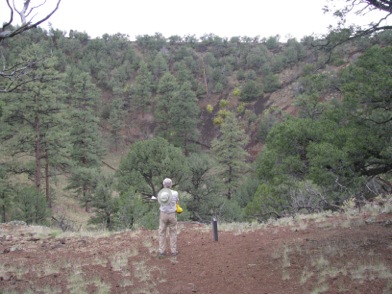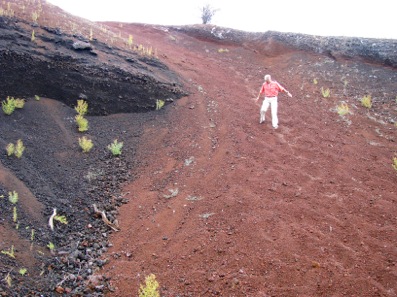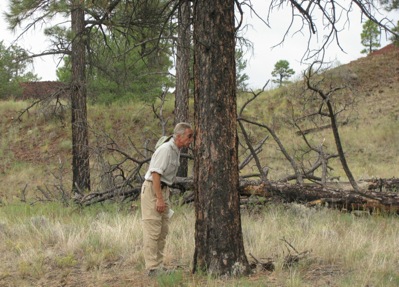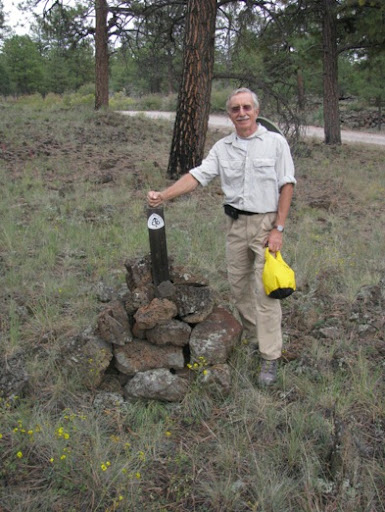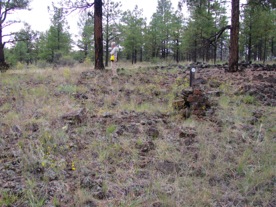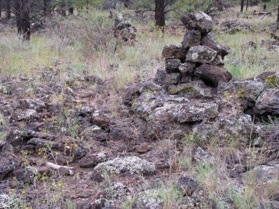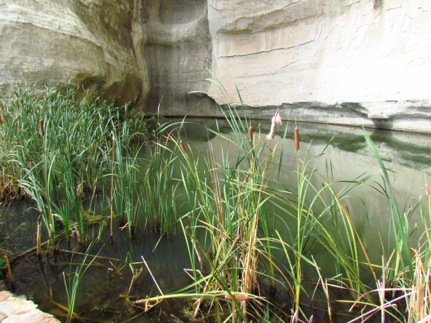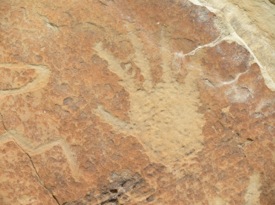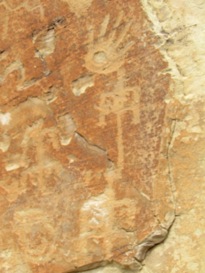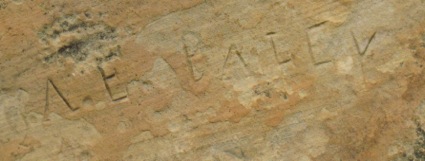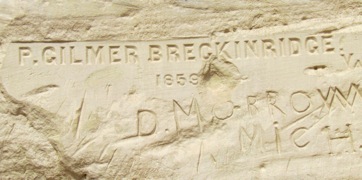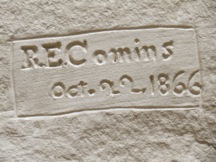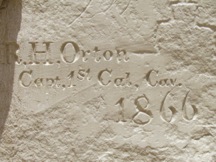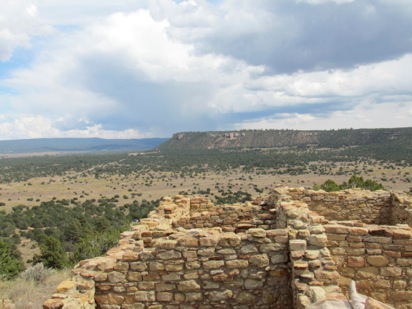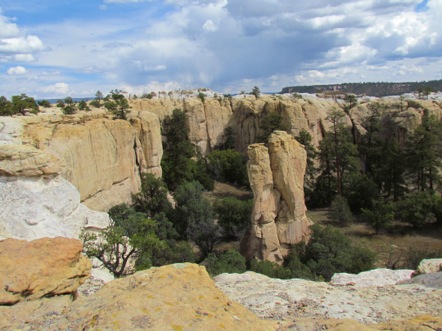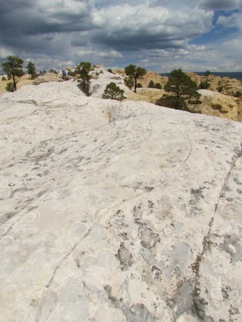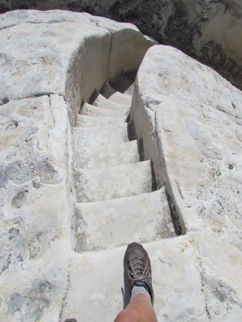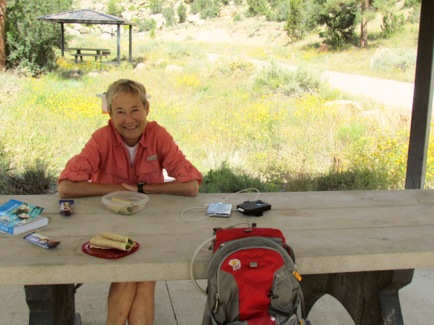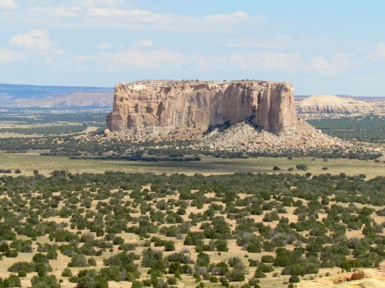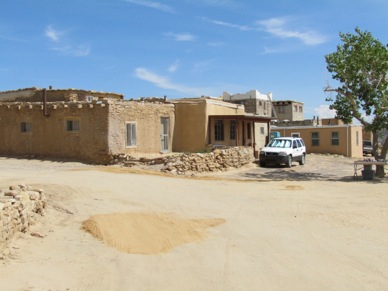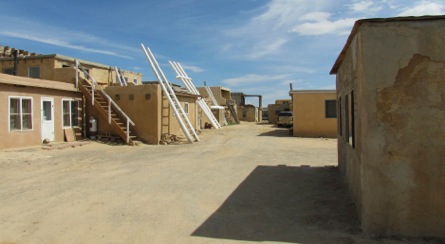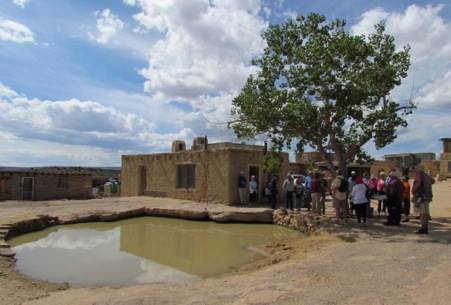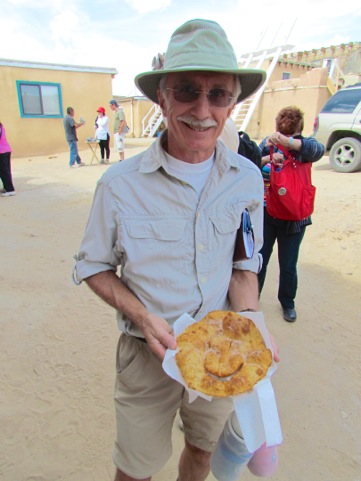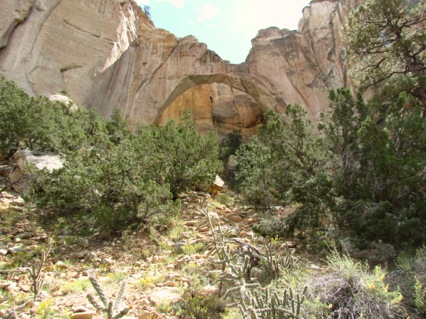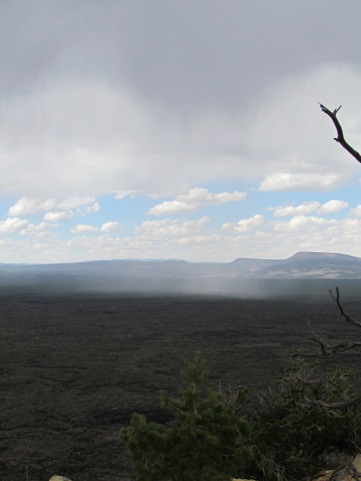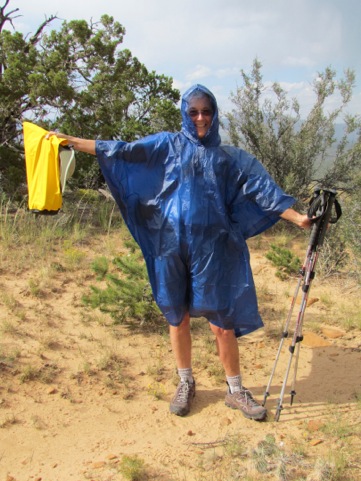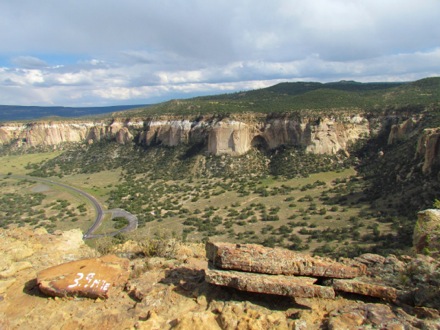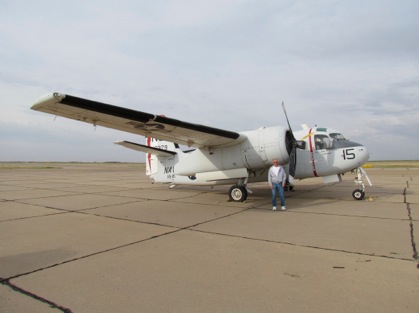 We’re in Gallup, NM today and are staying 2 nights. The town was named after David L. Gallup who was the railroad paymaster. When he arrived with his pay chests, everyone said they were going to ‘Gallup’ and the name stuck. Eventually, it became Northwest New Mexico’s good time town.
We’re in Gallup, NM today and are staying 2 nights. The town was named after David L. Gallup who was the railroad paymaster. When he arrived with his pay chests, everyone said they were going to ‘Gallup’ and the name stuck. Eventually, it became Northwest New Mexico’s good time town.
We’re in a nice park which is absolutely full this weekend. In fact they even have several RV’s in a dry camping area off to one side. We are parked in the back row and have this interesting vehicle in front of us. It must be longer than a semi and they must live in the front where the slide is but what do they carry in the back of it?
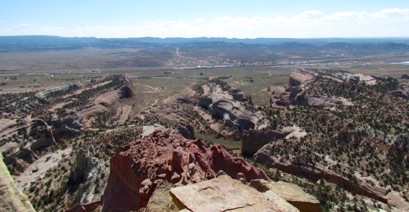 Today began as a rest day. We’ve either been rolling on down the road or museuming or hiking since the day we started, Friday, September 21. Today we’re going to rest, do laundry, do bookwork, anything but something. Breakfast, coffee, and then we were sitting when we decided that we needed to take a walk and why not go to Red Rock park which only 6 miles down the road. Why walk in an RV park when we could hike in a park? Yeah, why not? And thus does the day of rest end.
Today began as a rest day. We’ve either been rolling on down the road or museuming or hiking since the day we started, Friday, September 21. Today we’re going to rest, do laundry, do bookwork, anything but something. Breakfast, coffee, and then we were sitting when we decided that we needed to take a walk and why not go to Red Rock park which only 6 miles down the road. Why walk in an RV park when we could hike in a park? Yeah, why not? And thus does the day of rest end.
So, we changed and headed on over to the park, driving on old Hwy 66 as we did. Lots of motels, lots of restaurants, lots of Indian jewelry, pottery, leather works, etc. Billboards lining the highway - on both sides. Yep, this is what I imagined rte 66 would look like. But, it was way more fun than driving Interstate 40 which was about 100’ north from us, enough space for the railroad to wend its way between these two roads. However, there were really not many people on the road itself and many of the businesses were closed - on a Sunday.
We had wanted to eat breakfast out today but all of the possible restaurants that we found online were closed. And, that is typical for Gallup on a Sunday. In fact, most of the shoppes were closed, too - how in the world are they going to sell to the tourists? Dairy Queen was closed - now, how often on a Sunday at 11:00 a.m. could you say that?
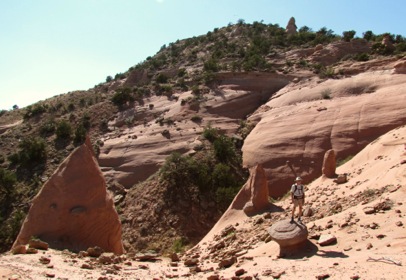
The trail is called the Pyramid Rock Trail, a nice trail with a payoff at the end of a 360 degree view of the Gallup area. We could see for miles and miles. This rocks are striated with about 6 different layers, in all colors from red to pink to grey to white. As we climbed we could see ourselves moving though these layers, through geologic time, we could see the lines between the layers as we stepped from the red layer to the white layer and on up into the pink layer.
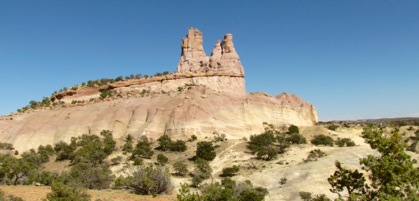 Some of the layers had been worn away so well that we were hiking through extremely find sand, as if it was a sand dune. When the wind came up, Gary counseled ‘keep your mouth closed.’ What does he mean? I’m trying to breathe here. I don’t care how often I hike or how far or how high, I sound like a freight trail coming in to the station, huff, puff, huff, puff, huff puff huff, puff. I sound like I’m dying but I’m still among the living.
Some of the layers had been worn away so well that we were hiking through extremely find sand, as if it was a sand dune. When the wind came up, Gary counseled ‘keep your mouth closed.’ What does he mean? I’m trying to breathe here. I don’t care how often I hike or how far or how high, I sound like a freight trail coming in to the station, huff, puff, huff, puff, huff puff huff, puff. I sound like I’m dying but I’m still among the living.Beautiful views of interesting rock formations all around us.
As we were climbing we noticed a raven swirling through the wind. He was playing with the thermals as he soared around the peak. Then he really got into it when he began to pull his wings in, head downward and then pull up as he neared the rocks. To my human eye, it looked as he were playing with the wind. Maybe it was something else but he did it repeatedly. Must be Jonathan Livingston Raven. Amazing.
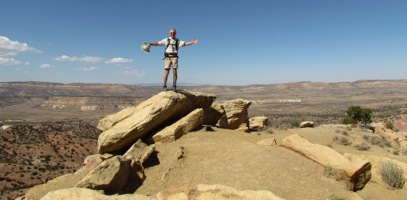 At the top, we took some pictures to memorialize our climb and then began our descent. We had read in my Moon travel guide on New Mexico that there was a trail looping off of this one so we scanned the trail for the junction. When we found it, we were off in a different direction - though this was an unmarked trail and we had no idea where it was, where it went nor if it would end up back where our car was. But, it was early and we had the energy to explore. Besides, when one hikes in the desert, one can usually see where one wants to be, there are not large trees to block the way. Of course, there was the matter of these huge bounders and hills but we still knew where our car was. It’s much easier to get lost in a forest than on the desert.
At the top, we took some pictures to memorialize our climb and then began our descent. We had read in my Moon travel guide on New Mexico that there was a trail looping off of this one so we scanned the trail for the junction. When we found it, we were off in a different direction - though this was an unmarked trail and we had no idea where it was, where it went nor if it would end up back where our car was. But, it was early and we had the energy to explore. Besides, when one hikes in the desert, one can usually see where one wants to be, there are not large trees to block the way. Of course, there was the matter of these huge bounders and hills but we still knew where our car was. It’s much easier to get lost in a forest than on the desert.
As we were hiking down we got a phone call from some good friends of ours who also have an RV and were heading back home from a short trip to a cranberry festival in Wisconsin. We chatted for a while and after we said good-bye, she didn’t quite get the phone turned off and we heard her say to her husband ‘they’re hiking’ I’m sure he turned to her and said ‘tell me something new.’ However imagine being out in the wilderness as we were, hiking among the rocks and desert and being able to get a cell phone call. Such is modern life. Heck, I could have probably been able to check the stock market had it been open on a Sunday.
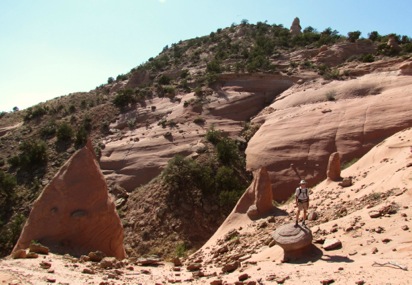
Neat rock formations, neat colors, wonderful layering and a downward trail for the most part. All that I could ask for. We enjoyed it though ‘unmarked’ really describes it and we think we were bushwhacking at times.
Finally, we got back to the car, where I found this wonderful Indian shard. I’m thinking Corell 1969. Notice the distinct blue pattern.
On the trail we had met a woman from the area who told us that we should see El Rancho Hotel and Motel, dating from 1937’s. We scanned the highway as we returned and, when we found it we turned in.
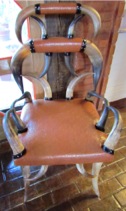
 Rustic Western theme in the lobby with a huge stone fireplace, wood paneling, leather and wood furniture tied together with rawhide and decorated with bull horns. It was quite a hotel in its day and hundreds of movie actors and actresses passed through its doors while they were working on movie sets in the area. John Wayne, Burt Lancaster, Lucille Ball, Kirk Douglas, Ronald Reagan, Nancy Wyman, Katherine Hepburn, Spencer Tracy, and many others from the 40’s and 50’s.
Rustic Western theme in the lobby with a huge stone fireplace, wood paneling, leather and wood furniture tied together with rawhide and decorated with bull horns. It was quite a hotel in its day and hundreds of movie actors and actresses passed through its doors while they were working on movie sets in the area. John Wayne, Burt Lancaster, Lucille Ball, Kirk Douglas, Ronald Reagan, Nancy Wyman, Katherine Hepburn, Spencer Tracy, and many others from the 40’s and 50’s.
Their signed pictures line the walls and guest rooms are named after them. Tons of atmosphere. And - a restaurant that was calling us. I had been thinking of a hamburg and fries all day and Gary, once he heard the idea, began thinking of a hamburg and fries also. He’s easily influenced. (NOT)
However, once I got seated I ordered the club sandwich with the side salad. Oh, boy. As the Texans would say - I am all hat and no cattle. Gary, on the other hand, followed though and ordered the hamburg and fries.
The meal was yummy and Gary gave me a bit of his sandwich and a few fries. I gave him 1/4 of my club sandwich and we both thought we were in culinary heaven. Well, we’re not that bad. But we did enjoy it. And it was better than the apple blueberry pancakes I was planning. Besides, I won’t have to wash dished tonight.
Back at the RV we showered, relaxed and got ready to move on the morrow.
5.5 1200’




